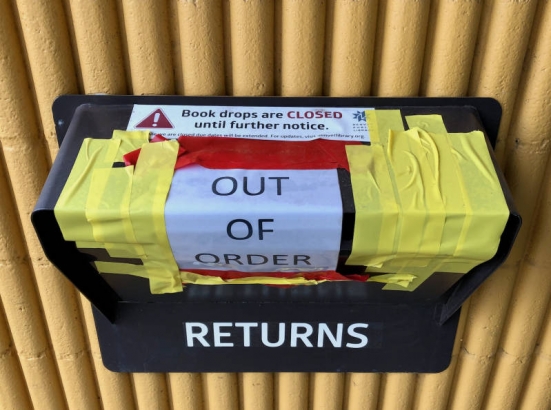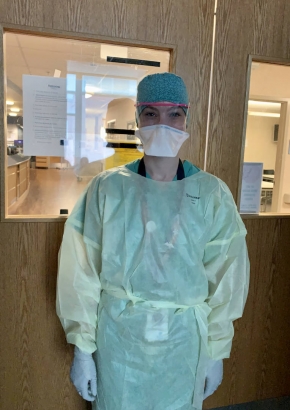How should Denver Public Library’s Western History and Genealogy Department (WHG) document the impact of the COVID-19 closure on our community? How does an institution that generally documents the past, capture a historic moment happening right now?
These are just a few of the questions that archivists and librarians at WHG faced when developing a manuscript collection that will help future generations understand the atmosphere in the Denver Metro area during the anxious weeks of a COVID-19 closure.
The results of that effort can be found in the COVID-19 Collection (WH2453). They include photos of local businesses as they appeared during the lockdown, journals from local schoolchildren, menus from local restaurants, and images collected by the local news organization Denverite to document social distancing. (Many of these items can now be viewed directly on our Digital Collections site.)
One of the greatest challenges in putting this collection together was deciding what should go into it in the first place. This isn’t as easy a decision as you might think. Putting together a manuscript collection—particularly one documenting an event in real-time—requires measured thought, one eye on the future, and another eye on our limited resources for processing collections of any kind.
For example, putting out a call for journals or photo albums documenting our customers’ lives under quarantine sounds like a good idea on its face. But evaluating and processing written materials and photos is incredibly labor-intensive, and could ultimately delay or inhibit the accessibility of such materials. Add to that the more academic consideration that these types of journals would be tainted by the simple fact they were written specifically to be put in an archive. With that in mind, the project just doesn’t work so well.
Another consideration: what are other local cultural institutions collecting? There’s really no value to our customers in collecting the same thing as our colleagues at History Colorado.
And finally, it's important that we keep the scope of our collection narrow enough that we can actually manage it.
That’s how our archivists arrived at the idea of documenting closure signs at local businesses during the state-wide closure. These signs are, hopefully, ephemeral items that won’t be around forever. When combined with closure-era restaurant menus, this part of the collection paints a very specific picture of the Denver-area that will be of use to future researchers.
Our staff went out into their own neighborhoods during the first weeks of quarantine, capturing the images that now appear in the collection. But there’s a lot more work that goes into creating archival photo collections than merely taking photos.
Staff members documented all the details surrounding the images, including the building’s address, neighborhood, type of camera used, and much more. While it sounds like a lot of extra work, this metadata (data about data) is invaluable for photo catalogers and allows our collections to be more easily searched by researchers. Once the metadata was entered into a spreadsheet, it was uploaded to our digital asset management system (DAM) and made available to our customers.
While the COVID-19 closures are something we’d all like to forget, they’re also an important moment in American history that must be documented. To that end, WH2345 is a collection that will likely see plenty of use in the decades to come.



Comments
Nice introduction to the
Nice introduction to the collection, Brian!
Thanks for the kind words!
Thanks for the kind words!
Add new comment